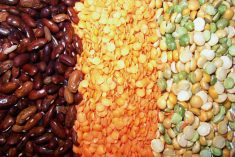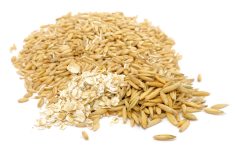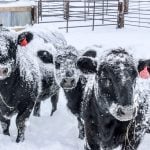The Alberta Wheat and Barley Commissions have announced a new “board of directors in waiting” as the next step in amalgamation of the two organizations.
The interim board, which will take over regional governance duties in conjunction with the Aug. 1 amalgamation, features 12 directors: six for wheat and six for barley.
“I think the people that have been chosen to sit on that interim board are definitely committed to making the organization work and are willing to put in the work required to establish the organization,” said Greg Sears, chair of the Alberta Wheat Commission and a director for the interim board.
Read Also

Best before doesn’t mean bad after
Best before dates are not expiry dates, and the confusion often leads to plenty of food waste.
The members on the Alberta Wheat Commission side of the board include Dave Bishop (Region One), Dean Hubbard (Region One), Devin Hartzler (Region Two), Jason Lenz (Region Three), Shawn Jacula (Region Four) and Greg Sears (Region Five).
The Alberta Barley members include Sean Stanford (Region One), Tara Sawyer (Region Two), Roy Newman (Region Two), Connie Matson (Region Three), Clint Jacula (Region Four) and Scott Jesperson (Region Five).
The regions listed reflect the current boundaries for both organizations. Regions for the amalgamated group have not yet been defined.
Until Aug. 1, the current Alberta Barley and Alberta Wheat Commission boards will continue to act as official directors of their respective organizations but will work with the interim board to develop a direction for the new group.
“The existing board is still the board, absolutely,” said Tara Sawyer, a director at large for Alberta Barley. “We are still two separate entities so we are still running two separate boards making separate decisions.”
The interim board will see a reduction in number of directors, including the elimination of director at large positions.
The current AWC board includes five regions with one director at large for a total of 11 directors. The Alberta Barley board has six regions with three directors at large for a total of nine.
“The region map (for the interim board) will be very similar to the Alberta Barley map with two directors from each region to make up the 12,” said Sears.
“There will not be at this point any directors at large because we believe there will be sufficient representation with that number of directors at the table.”
The interim board will serve from Aug. 1 through the election of a new board in the fall and until the new organization’s AGM in December or January.
“The marketing council regulations that we function under require that a permanent and elected board be in place within a year of inception, so that means we’ll have the elections in roughly November, which will provide us with that permanent elected board effective the end of the year,” said Sears.
The marketing council supervises the governance and operations of marketing boards and commissions under the provincial Marketing of Agricultural Products Act, which provides the framework for organizations such as the Alberta Wheat Commission and Alberta Barley.
Rebranding the organization
Preventing confusion around rebranding is a major challenge for the interim board, said Sawyer.
Although the amalgamated commission has a new name that the board hopes to announce in May, it will need to make sure all stakeholders know it’s the organization taking over from the Alberta Wheat and Barley commissions.
“We need to make sure that government and everybody knows it’s still us. If nothing else, our stakeholders have to understand that there has been a name change and how that might impact them. Everybody needs to know, for their levy dollars, that this is the new name going forward.”
A more general challenge is to continue as a strong voice for both crops on national organizations while in the new, pared-down mode.
“In a lot of those instances we’ll be going down to just one representative for each commodity where often we have two reps for each commodity. We need to continue to be that strong voice and advocate for wheat and barley,” said Sawyer.
One of the primary reasons for amalgamating the two groups is the development of a “merit-based” funding philosophy for research. It will be the job of the interim board to figure out what “merit-based” means in this context and to make sure wheat and barley get equal time in the research department.
“We plan to do a strategic plan where those type of parameters will really be set up to make sure that even within that merit-based process, barley and wheat will each get their moment,” said Sawyer.
“A lot of Albertans grow both crops. We care about both of those commodities and expanding them and improving them so that our producers see that benefit.”
The formation of the amalgamated commission depends on approval by the Minister of Alberta Agriculture and Irrigation. The commissions hope to get this approval by June, but Sawyer said a provincial election could result in some speed bumps.
There are three sets of regulations — plan, commission and bylaws — that must be presented to farmers for feedback, sent to the marketing council for approval and ultimately sent to the minister for sign-off.
The commissions presented their draft plan regulation in a virtual town hall March 15.
“Basically, we have to get all that official stuff done. That ministerial approval is what we really need in order to meet that Aug. 1 deadline,” said Sawyer.
















